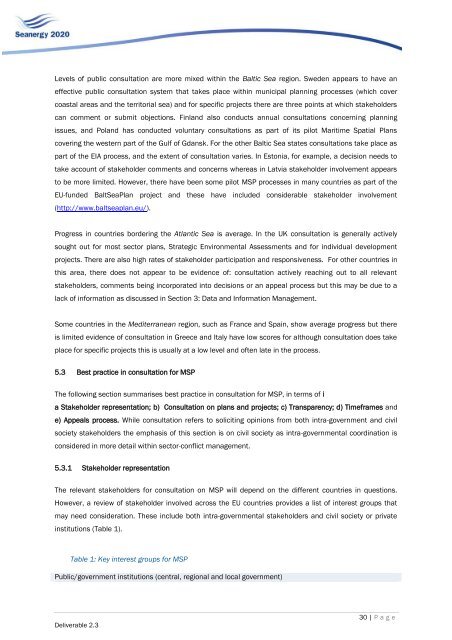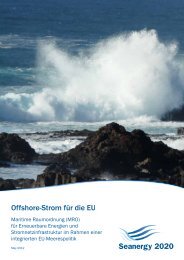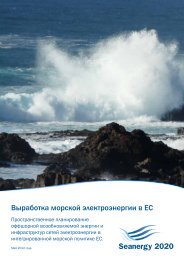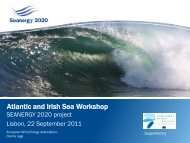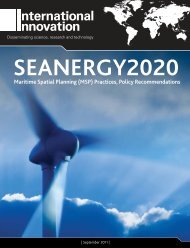Comparative analysis of Maritime Spatial Planning ... - Seanergy 2020
Comparative analysis of Maritime Spatial Planning ... - Seanergy 2020
Comparative analysis of Maritime Spatial Planning ... - Seanergy 2020
Create successful ePaper yourself
Turn your PDF publications into a flip-book with our unique Google optimized e-Paper software.
Levels <strong>of</strong> public consultation are more mixed within the Baltic Sea region. Sweden appears to have aneffective public consultation system that takes place within municipal planning processes (which covercoastal areas and the territorial sea) and for specific projects there are three points at which stakeholderscan comment or submit objections. Finland also conducts annual consultations concerning planningissues, and Poland has conducted voluntary consultations as part <strong>of</strong> its pilot <strong>Maritime</strong> <strong>Spatial</strong> Planscovering the western part <strong>of</strong> the Gulf <strong>of</strong> Gdansk. For the other Baltic Sea states consultations take place aspart <strong>of</strong> the EIA process, and the extent <strong>of</strong> consultation varies. In Estonia, for example, a decision needs totake account <strong>of</strong> stakeholder comments and concerns whereas in Latvia stakeholder involvement appearsto be more limited. However, there have been some pilot MSP processes in many countries as part <strong>of</strong> theEU-funded BaltSeaPlan project and these have included considerable stakeholder involvement(http://www.baltseaplan.eu/).Progress in countries bordering the Atlantic Sea is average. In the UK consultation is generally activelysought out for most sector plans, Strategic Environmental Assessments and for individual developmentprojects. There are also high rates <strong>of</strong> stakeholder participation and responsiveness. For other countries inthis area, there does not appear to be evidence <strong>of</strong>: consultation actively reaching out to all relevantstakeholders, comments being incorporated into decisions or an appeal process but this may be due to alack <strong>of</strong> information as discussed in Section 3: Data and Information Management.Some countries in the Mediterranean region, such as France and Spain, show average progress but thereis limited evidence <strong>of</strong> consultation in Greece and Italy have low scores for although consultation does takeplace for specific projects this is usually at a low level and <strong>of</strong>ten late in the process.5.3 Best practice in consultation for MSPThe following section summarises best practice in consultation for MSP, in terms <strong>of</strong> ia Stakeholder representation; b) Consultation on plans and projects; c) Transparency; d) Timeframes ande) Appeals process. While consultation refers to soliciting opinions from both intra-government and civilsociety stakeholders the emphasis <strong>of</strong> this section is on civil society as intra-governmental coordination isconsidered in more detail within sector-conflict management.5.3.1 Stakeholder representationThe relevant stakeholders for consultation on MSP will depend on the different countries in questions.However, a review <strong>of</strong> stakeholder involved across the EU countries provides a list <strong>of</strong> interest groups thatmay need consideration. These include both intra-governmental stakeholders and civil society or privateinstitutions (Table 1).Table 1: Key interest groups for MSPPublic/government institutions (central, regional and local government)Deliverable 2.330 | P a g e


